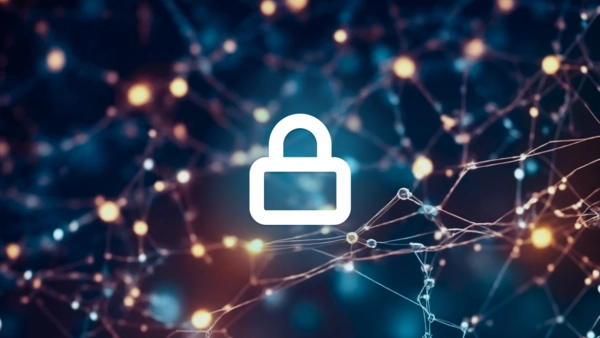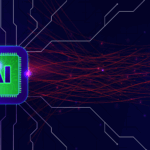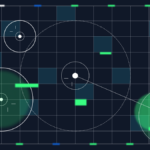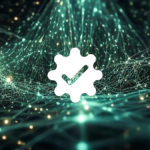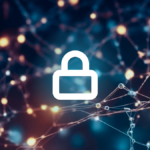You’ve rolled out a generative AI tool to help teams move faster and work smarter. But there’s a problem: the answers are off…Sometimes outdated…Sometimes just plain wrong.
That’s what happens when AI isn’t grounded—when it doesn’t have access to the right internal data. Instead of insights, you get hallucinations. And it’s a major issue. In fact, Gartner predicts that by 2026, 60% of AI projects will be scrapped because of poor grounding.
So, how do you achieve AI grounding?
Let’s take a look.
AI grounding: In-depth
AI grounding is what transforms generic large language models (LLMs) into context-aware machines. It’s the process of supplying the AI model with relevant, use-case-specific data it wouldn’t otherwise have—like internal documents, up-to-date product specs, customer conversations, and so forth.
On their own, generative AI tools are limited. They’re trained on massive datasets pulled from public sources, which gives them a broad, generalized understanding of language, reasoning, and facts. But they don’t know what’s happening inside your organization, and they can’t access data that’s private, proprietary, or recent. That’s where issues start to arise.
Without grounding, LLMs try to fill in the blanks—And they don’t have the information to get it right. Answers might sound confident but be completely off-base—outdated facts, made-up references, or hallucinated responses that erode trust. Crucially, this isn’t a model problem. It’s a context problem—a data one.
Grounding solves this by pairing the LLM’s reasoning capabilities with the data it needs to understand your organization. It allows the model to, for example, answer questions about your internal policies, generate accurate summaries of project workflows, and write content that aligns with your brand voice. Essentially, with grounding, you’re giving AI the information it needs to work reliably, safely, and at scale.
The benefits of AI grounding
Without grounding, AI systems rely on what they learned during training—data that’s often outdated, generalized, or irrelevant to your business. Grounding changes that. It ensures AI doesn’t just generate language fluently, but does so based on the right information.
Here’s why it matters.
1. Responses that reflect the real world: AI trained on static datasets can’t keep up with fast-changing information. Grounding gives AI access to contextual, frontier data, so answers are based on what’s happening now—not what was true a year ago.
2. Domain knowledge that actually fits the use case: To get value from AI agents, you need them to understand your business. Grounding connects AI to data that reflects your specific domain, use case, and language. The result is outputs that drive business value at speed and scale.
3. Fewer hallucinations, more confidence: One of the biggest risks with AI is that it can generate rather convincing nonsense. Grounding helps mitigate this by anchoring responses in your business data. That makes the output not only more accurate, but also easier to verify—critical for users who need to trust what they’re seeing.
4. Scalable across teams and tasks: Once AI is grounded in the right data ecosystem, it becomes far more flexible. You’re no longer stuck with one-size-fits-all answers. The same system can serve different departments—pulling HR policies for one query, technical documentation for another—without needing to be re-trained from scratch.
Retrieval augmented generation: The key to grounding
So how do you actually implement grounding in practice? That’s where retrieval-augmented generation (RAG) comes in. If grounding is the outcome—accurate, relevant, context-aware AI responses—then retrieval-augmented generation (RAG) is the engine that powers it.
RAG is the process of retrieving the right information for an AI task, pairing it with the user’s prompt, and feeding this data to the language model so it can generate a grounded, informed response.
At its core, RAG connects two worlds: the LLM’s general reasoning capabilities, and your specific, real-world data. The result is a system that continuously adapts to what’s true and relevant now.
Here’s how it works in four key steps:
1. Data selection: Before the model can answer accurately, it needs access to the right information. The RAG system intelligently selects the most relevant data from across your enterprise—whether that’s structured data from internal systems or unstructured content like emails, support tickets, PDFs, and wiki pages.
2. Knowledge representation: Once the data is selected, it has to be translated into a format the model can understand. That’s where techniques like embedding come in—transforming text into dense numerical vectors that capture semantic meaning. Some systems may also use knowledge graphs to map how pieces of information relate to one another. Either way, this step ensures that meaning isn’t lost in translation.
3. Retrieval mechanism: Now that the data is structured and ready, the model needs to find what’s relevant at the moment a user submits a query. That’s the retrieval part. RAG systems use search and ranking mechanisms—often powered by vector databases and APIs—to surface the most relevant data in real time. The better this retrieval layer, the more accurate and useful the final output.
4. Integration: Finally, the retrieved data is injected into the model’s reasoning process. This can happen through in-context learning, where the model gets the relevant data fed directly into the prompt, or through memory augmentation, where the system maintains a persistent store of external knowledge it can reference as needed.
Together, these steps transform a general-purpose LLM into a truly enterprise-ready tool—one that responds with grounded, real-world intelligence.
Potential pitfalls in AI grounding
RAG is essential for organizations looking to embrace LLMs strategically. However, when implemented wrong, it can introduce serious operational, security, and compliance risks.
Here’s what organizations need to watch out for:
- Scaling without structure: As data volumes grow, RAG systems need clear AI and data governance to keep retrieval focused and efficient. Without it, you get drift: models start pulling in irrelevant or conflicting information, eroding the quality and consistency of outputs. This creates more noise than value, and undermines trust in AI-generated insights.
- Data silos and blind spots: If key knowledge is locked away in disconnected systems—or lacks consistent metadata—it’s effectively invisible to the model. RAG systems can’t ground responses in information they can’t find, and fragmented access leads to narrow or misleading outputs, especially in cross-functional use cases.
- Compliance and privacy failures: AI systems don’t intuitively understand regulatory boundaries. Without proper data classification and access controls within the RAG process, they can retrieve information they shouldn’t, or generate content based on sensitive internal sources. This can expose organizations to GDPR violations, IP leakage, or regulatory scrutiny.
- Inaccurate or unstable outputs: Not all RAG is created equal. Some systems retrieve too broadly, pulling loosely related context that muddies responses or introduces factual inconsistencies. Others struggle with version control—mixing outdated and current information without distinction. These issues compound when AI is used for decision-making.
- Security vulnerabilities and data leakage: Weak query filtering, improper access control, or unvetted sources create serious risks. If a system retrieves privileged or classified data, even unintentionally, that information can surface in AI responses—creating exposure without ever breaching a database. Worse, without strict controls, attackers could exploit these systems to extract confidential content.
The good news? These risks aren’t inevitable. They’re avoidable—with the right kind of RAG.
But not all RAG is created equal. You don’t need a butcher’s knife—you need a scalpel. Precision is key: giving AI just enough context to be useful, without exposing what should stay private.
That’s exactly what Polymer SecureRAG is built for.
AI grounding you can trust with Polymer SecureRAG
Polymer SecureRAG delivers AI grounding under the protection of enterprise-grade data governance.
Built on our human-centric DLP platform, SecureRAG combines smart retrieval with rigorous security. It enforces fine-grained access controls, filters sensitive content in real time, and continuously monitors for policy violations—so your AI only sees what it’s supposed to see.
With SecureRAG, you can:
- Ground AI in real-time, business-critical data—without risking leaks
- Serve accurate, context-aware answers across teams and use cases
- Ensure outputs stay compliant with data privacy, IP, and access rules
- Build trust in AI systems that are safe, scalable, and enterprise-ready
Ready to see it in action? Get a demo of Polymer SecureRAG and discover how to make AI work for your business—securely, responsibly, and at scale.

